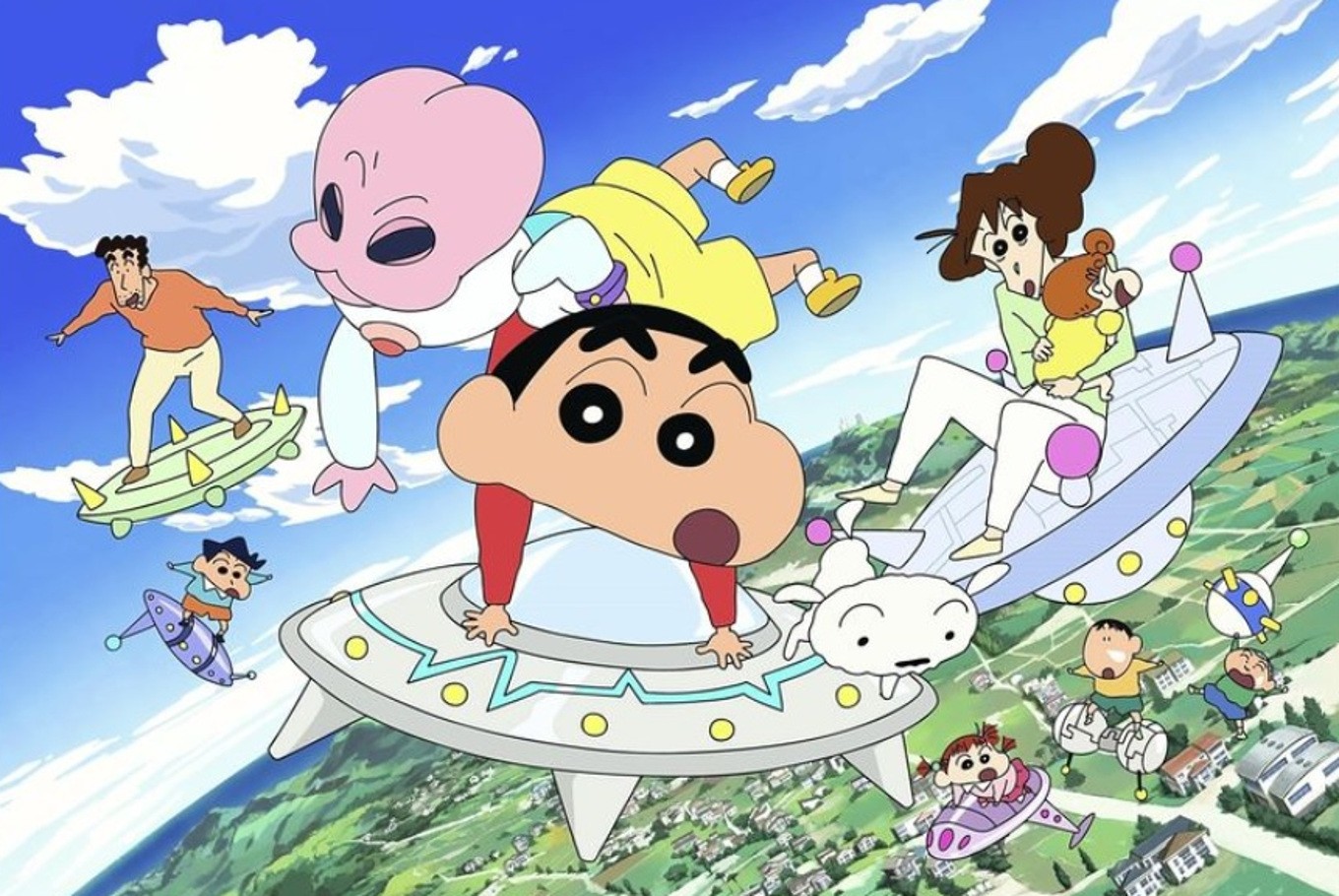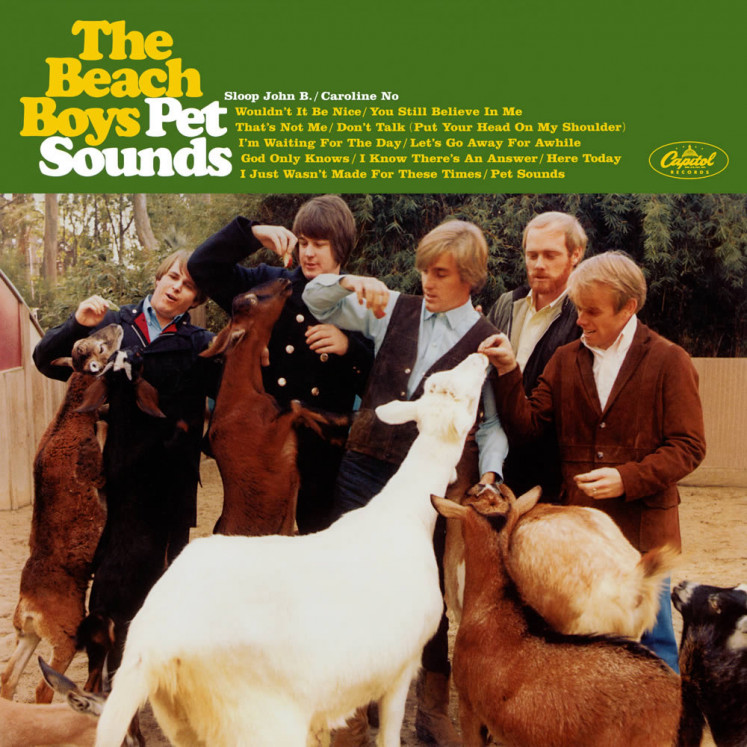‘Crayon Shinchan’ anime marks 25 years
Change text size
Gift Premium Articles
to Anyone
 A scene from the latest 'Crayon Shinchan' film titled 'Shurai!! Uchujin Shiriri' (Attack by spaceman Shiriri) (Usui Yoshito/Futabasha/SHIN-EI Animation/TV Asahi/ADK (2017)/File)
A scene from the latest 'Crayon Shinchan' film titled 'Shurai!! Uchujin Shiriri' (Attack by spaceman Shiriri) (Usui Yoshito/Futabasha/SHIN-EI Animation/TV Asahi/ADK (2017)/File)
S
hinnosuke Nohara is a kindergartner who is always causing trouble. Better known as Shinchan, the boy is the protagonist of the manga “Crayon Shinchan.” The anime version of his adventures first aired on the TV Asahi network in 1992, and the series is celebrating its 25th anniversary with a new film that has been just released.
“Crayon Shinchan” is a comedy manga featuring the mischievous 5-year-old boy who lives in Kasukabe, Saitama Prefecture, with his father Hiroshi, mother Misae, baby sister Himawari and a pet dog named Shiro. Shinchan plays together with four friends by forming the Kasukabe Boeitai, a team ostensibly dedicated to maintaining love and peace in their neighborhood.
Shinchan’s character has faced both positive and negative responses over the past 25 years, because he seems too intense and is sometimes even embarrassing from the viewpoint of parents.
The boy defiantly calls his mother only by her first name, while also expressing enthusiasm for beautiful young women and indecent topics. At one time, some parents and teachers were annoyed by his behavior and concerned about the negative impact the character could have on children. The anime has always ranked highly on the list of TV programs parents deemed unsuitable for children. Thus did Shinchan exert his influence.
The work also became a media franchise, and a series of anime films have been released in theaters. The first film in 1993 became a big hit, making ¥2.22 billion at the box office, but most of the subsequent releases fell short of the ¥2 billion mark until 2015, when the film “Ora no Hikkoshi Monogatari: Saboten Daishugeki” (Crayon Shinchan the Movie: My Moving Story — Cactus Attack) earned ¥2.29 billion.
The manga was originally created for a magazine for young men. When the anime was first broadcast on TV, the work was not well known. The first episode aired in April 1992 and received an audience rating of 4 percent in the Kanto region. However, the figure gradually increased, exceeding 20 percent nine months later. Newspapers at the time ran stories expressing surprise at its popularity along with various opinions on it.
“This anime exactly depicts today’s children, and parents empathize with the descriptions,” the TV Asahi public relations department was quoted as saying in a Dec. 18, 1992, Yomiuri Shimbun article. “Children seem to like Shinchan as he is close to what they really are.”
Another Yomiuri Shimbun story dated Nov. 14 the same year featured comments from a manga critic: “Shinchan knows a lot about the feelings of adults and makes fools of them. He is extremely precocious.”
Read also: ‘Gintama’ live action movie trailer released
Long-lasting popularity
On the other hand, one commentator predicted the boom would soon subside, saying: “Any character with a strong personality tends to be forgotten quickly. The life span of such characters will probably become shorter and shorter.”
However, negative impressions and opinions about Shinchan turned out to be short-lived. Who on earth could have foreseen that this character — despite remaining unchanged — would be accepted by society and still enjoy so much popularity today?
Children who grew up watching Shinchan have now become adults and started to enjoy it with their own children. It has become one of the most celebrated long-running Japanese animations across generations, in the same league as “Doraemon” and “Meitantei Conan” (Detective Conan).
The latest animated film, “Eiga Crayon Shinchan: Shurai!! Uchujin Shiriri” (Attack by spaceman Shiriri), which opened on Saturday last week, centers on rejuvenation. When a spacecraft accidentally falls on Shinchan’s house, a mysterious spaceman named Shiriri (voice provided by actress Mirai Shida) comes out and emits a magic beam that transforms the protagonist’s parents into young children, with the mother becoming as short as her son. The Noharas embark on a trip to look for a way to enable the parents to regain their original bodies.
The world seen through a 5-year-old’s eyes is apparently a key element of “Crayon Shinchan.” In a way, the character is like the marks made on a wall or pillar to record children’s heights as they grow up. For children younger than Shinchan and their parents, the boy is adored because he can win arguments with adults and, more importantly, his behavior is funny.
When children become old enough to learn how to behave properly, they probably envy and miss the freedom Shinchan enjoys. He remains on the border between the early childhood and elementary school stages, reminding people of the fond memories of their early years. And this is perhaps the secret of Shinchan’s long-lasting popularity.
Chronology
1990: Yoshito Usui starts serializing manga in magazine
1992: Anime adaptation starts on TV Asahi network
1993: 1st anime film released. Audience rating for TV special gets 28.2 percent in Kanto region
2002: 10th film wins grand prize of animation division at Cultural Affairs Agency’s Japan Media Arts Festival
2003: Honored with Spain’s best entertainment character award. Also named most unsuitable TV program for children by National Congress of Parents and Teachers Association of Japan
2006: Junior high school textbook features Noharas as example of nuclear family
2009: Usui dies
2010: Usui’s former assistants resume manga serialization
*So far, 54 million copies of the comics and 26 million copies of related books have been printed in Japan, while 29 million copies of translated versions have been printed in 14 countries and territories.
This article appeared on The Japan News newspaper website, which is a member of Asia News Network and a media partner of The Jakarta Post









